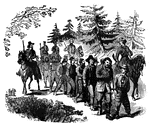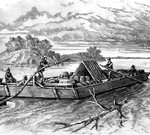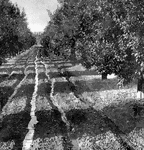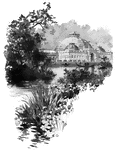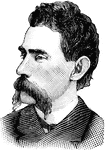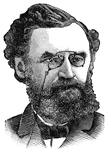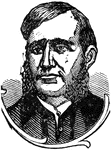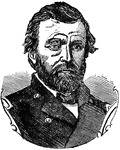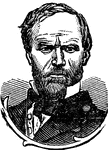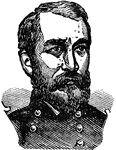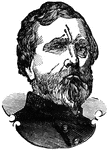
General Rufus King
"General King, born in New York city, January 26th, 1814, died there, October 13th, 1876, was graduated…
!["Presentation of colors to the Twentieth United States [African American] Infantry, Colonel Bartram, at the Union League Clubhouse, New York, March 5th, 1864. The Twentieth Regiment, United States [African American] Troops, left Riker's Island at nine o'clock on the 5th of March, 1864, on board the steamer <em>John Romer</em>, and were conveyed to the foot of Twenty-first Street, East River, New York, where they were disembarked and formed in regimental line, and marched to Union Square, arriving in front of the Union League Clubhouse at one o'clock. A vast crowd of citizens, of every shade of color and every phase of social and political life, filled the square and streets, and every door, window, veranda, tree and housetop that commanded a view of the scene was peopled with spectators. Over the entrance of the clubhouse was a large platform, ornamented with flags and filled with ladies. In the street was another platform, tastefully decorated and occupied by prominent citizens. From the stand the colors were presented by President King of Columbia College, who addressed them with warmth and eloquence. After the presentation ceremony was over the men stacked arms and partook of a collation provided for them."— Frank Leslie, 1896](https://etc.usf.edu/clipart/11700/11749/presentcolor_11749_mth.gif)
Presentation of Colors
"Presentation of colors to the Twentieth United States [African American] Infantry, Colonel Bartram,…

Red River
"The war on the Red River. Admiral Porter's fleet passing through Colonel Bailey's Dam, above Alexandria,…
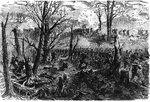
War in Tennessee
"The war in Tennessee. Capture of Mission Ridge, near Rossville, by General Thomas, November 25th, 1863.…

Ascent of Round Top
"Visit of Union and Confederate officers to Gettysburg, the ascent of Round Top."— Frank Leslie,…
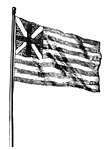
Union Flag
"Union Flag. The first recognized Continental Standard, raised for the first time January 2, 1776."—E.…

Captain Nathaniel Lyon
"Captain Nathaniel Lyon fought for the Union during the Civil War."—E. Benjamin Andrews 1895

General John C. Fremont
"General John C. Fremont was head of the Western department during the Civil War."—E. Benjamin…
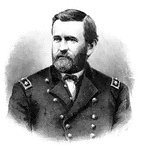
Ulysses S. Grant
"Ulysses S. Grant, president of the United States after the Civil War."—E. Benjamin Andrews 1895
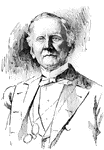
Samuel J. Tilden
"Samuel J. Tilden helped to reform the Democratic Party after the Civil War and ran for president."—E.…

KKK Scene
"A prospective scene in the city of Oaks, 4th of March, 1869. The above represents the fate in store…
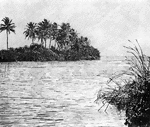
Miami River
"The mouth of th Miami River, Florida, whenever Florida started to be devloped in the 1890's."—E.…
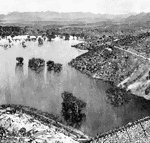
Walnut Grove
"The irrigating reservoir at Walnut Grove, Arizona, showing the Artificial Lake partly filled."—E.…
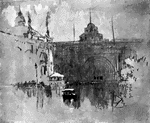
World's Fair
"The World's Fair at Chicago. The doorway of the transportation building."—E. Benjamin Andrews 1895
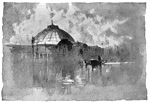
World's Fair
"The World's Fair at Chicago. Dome of horticultural building at night."—E. Benjamin Andrews 1895

Union Pacific
"The big loop on the Georgetown branch of the Union Pacific, Colorado."—E. Benjamin Andrews 1895

Union Terminal
Cross Section of umbrella train shed, showing clearance lines, Union Terminal, Washington, D.C.

Continental Bills
Fac-simile of the Continental Bills. The paper on which these bills were printed was quite thick, and…

Society of the Cincinnati
"Society of the Cincinnati, member's certificate. This engraving is a fac simile of a certificate, about…
Burning of the White House
"Burning of the White House- the Federal troops, by command of General McClellan, abandoning their position…

Passenger Train
"The first passenger locomotive built in the United States. A year after the Enterprise sailed for India,…
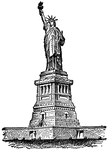
Statue of Liberty
"The Statue of Lberty is a colossal statue on Bedloe's Island, N.Y. On Oct. 28, 1886, after more than…

Badge of the Army of the Potomac
"The Union forces which operated in Virginia in the Civil War were known as the "Army of the Potomac."…
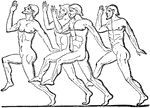
Foot-race
"The Olympic games were of greater efficacy than the Amphictyonic Council in promoting the spirit of…

Wrestling
"The Olympic games were of greater efficacy than the Amphictyonic Council in promoting the spirit of…
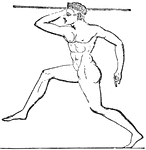
Hurling the javelin
"The Olympic games were of greater efficacy than the Amphictyonic Council in promoting the spirit of…

Boxing
"The Olympic games were of greater efficacy than the Amphictyonic Council in promoting the spirit of…
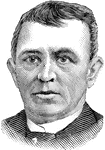
Henry W. Grady
A journalist and orator who helped to reintegrate the former Confederacy into the union after the Civil…

John P. St. John
Politician and colonel for the Union during the Civil War. He elected to the Kansas Senate in 1873 and…
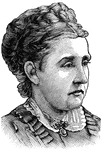
Julia Ward Howe
Julia was an abolitionist and poet. She is famous for the Battle Hymn of the Republic and for…

Frances Elizabeth Willard
Frances Elizabeth Caroline Willard was an educator and women's suffragist. She was president of the…

Elizabeth Rodgers
Mrs. Rodgers was a delegate at the Knights of Labor convention at Richmond in 1887. She organized the…

General William Rosecrans
Served for the Union during the Civil War and was president of the Preston Coal Oil Company.

Lewis Wallace
(1827-1905) A lawyer, eleventh Governor of the New Mexico Territory, and served in the Civil War for…

General George Meade
General George Meade of the Union Army, known for his defeat of General Lee at Gettysberg.
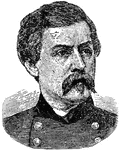
George McClellan
A major general during the American Civil War. He plaed an improtant role in raising a well-trained…
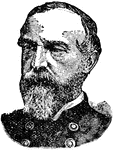
George Meade
A career U.S. Army officer and engineer involved in coastal construction. During the American Civil…

